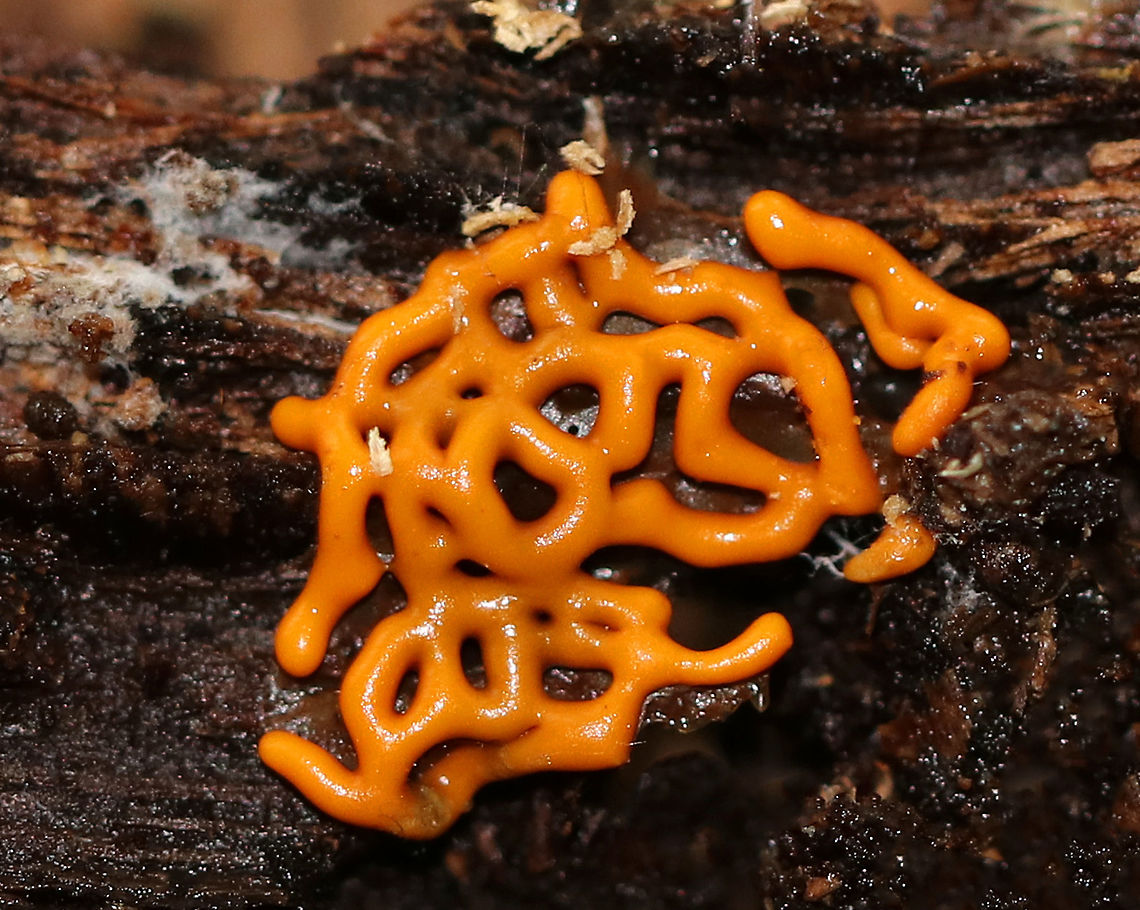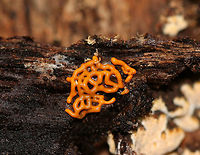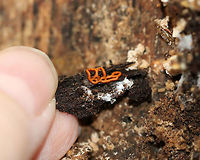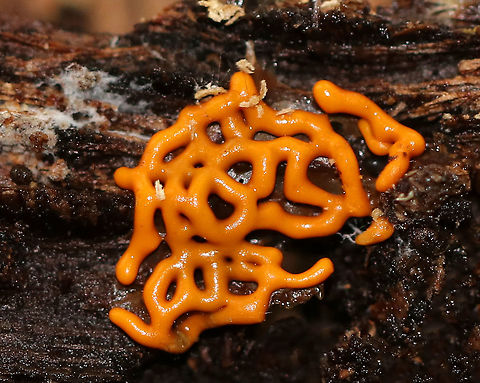 PromotedSpecies introCountry intro
PromotedSpecies introCountry intro
Pretzel Slime Mold - Hemitrichia serpula
Orange, pretzel-shaped network of slime mold strands.
Slime molds do not form penetrating or absorptive masses of hyphae on the wood substrate. Rather, slime molds form structures called plasmodia, which do not have cell walls. Plasmodia are masses of protoplasm which can move and engulf particles of food in an amoeboid manner. They creep over surfaces, engulfing bacteria, fungal spores, protozoa, and particles of nonliving organic matter. Eventually, the plasmodia turn into spore-bearing structures.
In Hemitrichia, the plasmodium forms a plasmodiocarp fruiting body where the spore-forming structure retains the
shape of the main veins of the plasmodium.
Habitat: Under the bark of a snag in a deciduous forest.




comments (15)
The Pretzel Slime Mold (Hemitrichia serpula) may resemble a pretzel, but I doubt it’s delicious or salty…And, it isn’t edible anyway. Slime molds are often studied by mycologists, but they are not fungi. Rather, they are eukaryotic organisms that can either live freely or aggregate together. Most species are tiny, but others can be over three meters long. There are at least 900 species of slime molds, and they are found on every continent. {Hemitrichia serpula, spotted in Connecticut, USA by JungleDragon moderator, Christine Young} #JungleDragon Posted 6 years ago
Hahaha! I'm glad to help keep you off the streets ;P. You crack me up! Posted 6 years ago